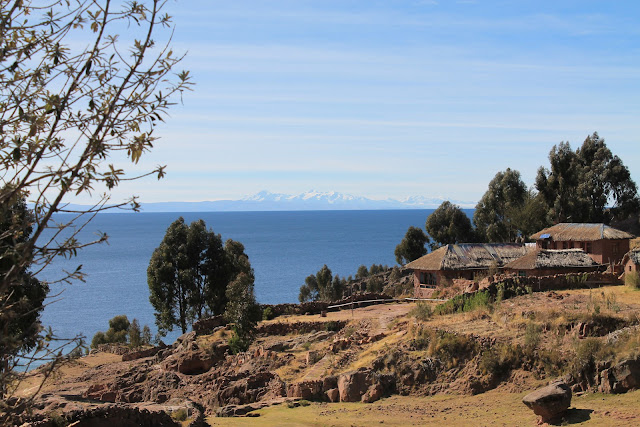czwartek, 27 czerwca 2013
Inti Raymi - Cuzco
During the Inca Empire the Inti Raymi (festival of the sun) was one of the most important ceremonies in honor of the god Inti. Nowadays the celebration is held every 24th of June and brings thousands of tourists to Cuzco. Today it is the second largest festival in the South America. Hundreds of actors are chosen to represent historical figures. During this time Cuzco is even more colorful than usual. You can observe people dancing on the streets, fireworks and street fairs.
You can find local "snacks" like cuyo (guinea pig)
Pisco Sour is a typical cocktail of Peru.
It is a combination of Pisco, key lime (or lemon), egg white, angostura bitters and ice. Delicious ;) ¡Salud!
Puno - Titicaca Lake
The lake is located on the border between Bolivia and Peru. The name comes from Quechua language, Titi means puma while caca means rock. Local people claim that the shape of the lake reminds them a puma hunting a rabbit. Titicaca is the highest navigable lake in the world but it's famous for its numerous islands where life is still unchanged by modern world. We had an opportunity to visit three of them.
The first island was Taquile. It is a tiny island with a population of about 2000 people. Taquile is known for its handicrafts tradition. Their textile art is considered by UNESCO as Masterpieces of the Oral and Intangible Heritage of Humanity.
The old rituals and traditions are still very important here. They mainly use traditional medicine and women give birth at home supported by the local midwife.
Alex making a traditional shampoo :) he says: "my shampoo may even compete with Head&Shoulders"
People here run their society using the Inca moral code with three main rules: do not steal, do not lie, do not be lazy. Divorce is also not permitted on the island.
On the Taquile island we visited a typical house of weavers and saw beautiful sandy beach.
Llachon - cross-cultural experience with the local community and traditional lunch - Pachamanca (meals prepared on the earth)
Pachamanca is typical Andean dish. The name is made of two Quechua roots: pacha - earth and manca - pot. Local people heat up stones over the fire and place meat on the top. Then the fire is covered by grass and earth. Food is ready after three hours. Usually they cook chicken, lamb, pork, fish , guinea pig, lima beans, potatoes and corn humitas. However pachamanca isn't simple method of cooking, it is ritual itself. Before eating the local authority thanks mother earth and lake for giving food to the community.
Uros - reed islands.
The Uros are a pre-Incan people who live on floating islands. They make them by themselves using the buoyant totora reeds that grow in the shallows of the lake. The Uros is a small tribe living in their old way. However it doesn't mean that they reject modern technology at all. On the island you can see solar panels, tv or boats with motors. People are happy and smiling all the time (because they don't have to pay taxes ;)).
On the way back our guide offered us a a glass of pisco ;)
niedziela, 23 czerwca 2013
Machu Picchu
Today was one of the most amazing and exciting days during our trip :) we saw Machu Picchu! We got up around 4am and at 7am we put a first step in the Lost City of the Incas. It is hard to describe what we have experienced. Usually there are not many people in the early morning so u can really feel the atmosphere. We share some photos and we hope that they help you to see and feel the magic of this place.
Subskrybuj:
Komentarze (Atom)













































































